So many species, so many ways to study them
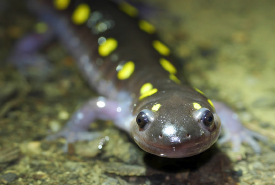
Spotted salamander (Photo by Rosemary Mosco)
I have the best job in the world. I encourage people to get excited about nature. I’m a science communicator — someone who bridges the gap between scientists, the media and the public, helping us understand each other better. One way that I do this is to make charts like Which Living Things Should You Study?

Illustration by Rosemary Mosco, bird and moon
The idea for this chart came from my own experiences as a naturalist. When I was first learning about nature, I found myself drawn to birds. I voraciously devoured every bird book, and learned to distinguish species in my neighbourhood by their remarkable variety of feather patterns, behaviours and calls.
Then I went to graduate school and studied botany. Suddenly, I found myself obsessed with ferns. I loved their delicate shapes, their varied habitats and their amazing reproductive techniques (the fronds burst up from a tiny structure — called a gametophyte — that looks like a green heart).
Next, my advisor encouraged me to take a class on something I knew nothing about. It was a great suggestion! I chose to study reptiles and amphibians. Again, I fell in love. Soon I was standing by roadsides on rainy nights, helping pudgy spotted salamanders cross the road to reach their breeding grounds.
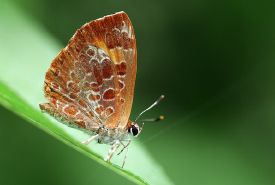
Harvester butterfly (Photo by Rosemary Mosco)
After school, I took a summer job in Washington, D.C. It was a hot, dry summer. To my dismay, the reptiles and amphibians were hiding in cool places deep underground. But a coworker gave me a guide to butterflies. Once again, I was in love. Butterflies led me to moths (which moth enthusiasts call The Dark Side). Moths led me to dragonflies…and so on.
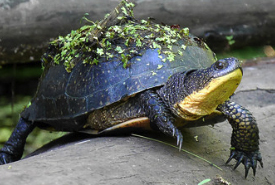
Blanding's turtle (Photo by Rosemary Mosco)
Nature is like a building with infinite rooms. No matter where you enter, you’ll find endless interconnected worlds awaiting discovery. You’ll also encounter communities of scientists and naturalists who are devoted to each type of species. There are butterfliers, birders, moth-ers, mushroomers, and more. Look for them online (in communities like iNaturalist) and at any of the thousands of nature clubs around the world. You’ll also discover tons of citizen scientist projects and other ways to turn your love of a species into meaningful conservation action, from advocacy to creating new habitats.
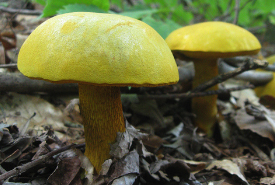
Ornate-stalked bolete (Photo by Rosemary Mosco)
Of course, these areas of interest come with some pretty serious benefits and drawbacks. Love salamanders? You’ll probably get rained on. Love birds? You’d better like early mornings too — and coffee. Adore snakes? When you pick up a serpent to measure it for a study, you’ll get sprayed with stinky musk; that’s not everyone’s cup of tea.
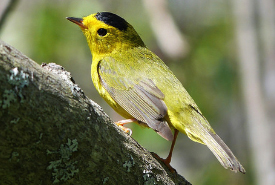
Wilson's warbler (Photo by Rosemary Mosco)
You may decide to turn your particular interest into a job. There are numerous options here as well. You can become a scientist who examines a certain type of life form or natural system. That’s a popular career route, but consider other possibilities too. You can do conservation, education or advocacy work for the government or a non-profit. You can become a consultant who helps people and businesses manage their land. Or, like me, you can be a science communicator.
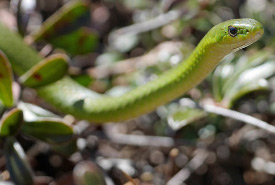
Smooth green snake (Photo by Rosemary Mosco)
There’s no clear career path for a communicator. You’ll find yourself doing many different things. I make comics, create graphics and write books (my first one is coming out today). To get here, I studied science communication and wildlife in school. I also kept my heart open to new experiences and new species.
Which creature is my favourite? It’s constantly changing. Really, they’re all my favourites. I work hard to foster a love for all life, from the smallest tardigrade to the biggest whale, to, yes, even the muskiest snake.


